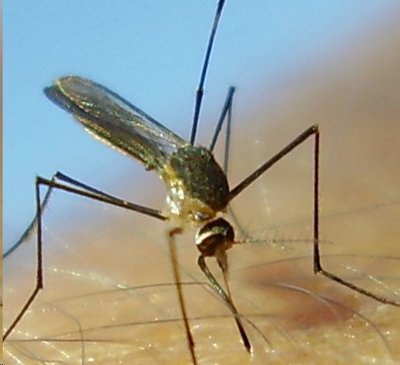Wyeomyia mosquito
Category: Mosquito

Facts about Wyeomyia mosquitos, Wyeomyia mosquito belong to the Genus of Wyeomyia mitchellii. Wyeomyia (why-oh-my-yah) belongs to the family Sabethini and generally inhabits forested areas. The purple pitcher-plant mosquito, the Wyeomyia mosquito have been spotted inhabiting bamboo stumps and broken bamboo, pitcher plants, flower bracts and small collections of water in bromeliad tanks and aroids in the in the neotropics. Adult Wyeomyia mosquito are usually found at ground levels of damp forest canopy. Wyeomyia mosquito populations are often abundant throughout the season. However, peak populations are normally observed from early July to late September probably because of the high rainfall. The Wyeomyia mosquito are also found in any container that can hold stagnant water for weeks in the summer. These may include roadside highway drains, unused swimming pools, birdbaths, and discarded old rimless tires.
Geographical distribution of Wyeomyia mosquito
The population of Wyeomyia mosquito extends southwards from Newfoundland to Delaware to the Gulf of Mexic. A large portion of the Wyeomyia mosquito population has also been spotted in Saskatchewan and northern Illinois. According to Curtis Best of the Central Massachusetts Mosquito Control Project (CMMCP), “Wyeomyia’s distribution corresponds to the range of the northern pitcher plants, Sarracenia purpurea gibbosa and Sarracenia purpurea venosa in which they complete their entire life cycle.â€
Description and visual characteristics of Wyeomyia mosquito
Adult Wyeomyia mosquito is of the smallest mosquitoes in the world. When feeding, the female usually adopts a characteristic position with its tarsi facing forward and hind legs extending straight above its body. When resting, the tiny adult Wyeomyia mosquito assumes a true sabathine pose – bending its legs over its head. The Wyeomyia mosquito also retain this same posture during flight. Most of the Wyeomyia mosquito species have white-banded legs, but a few do not. Solid graying scales cover the top of the thorax. Adult Wyeomyia mosquito never fly far from their larval habitats. The antenna is half as long as the length of the head with an inserted single tuft on outer ¼ of the shaft. Unlike other mosquito species, which have four gills, the Wyeomyia mosquito only has two.
Reproduction of Wyeomyia mosquito
Non-desiccation resistant eggs are laid in predacious pitchers with larger plants having more eggs than smaller pitchers. Eggs are laid in a systematic pattern in small batches. The female Wyeomyia mosquito deposit the eggs, on young leaves from the air, towards the end of the dry season, waiting to be filled with water.
The larvae are found within small water cavities, often within the pitcher plants. Like all other mosquitos – and even all flies, the Wyeomyia mosquito go through four stages in their lifecycles – egg, larva, pupa, and imago (adult). The first three stages are typically aquatic and last about 14 days depending on the ambient temperature. However, in dry or freezing seasons, the Wyeomyia mosquito eggs go through a diapause stage where their hatching is delayed for months, and resume with life when there is adequate warmth or water. In freezing regions, the eggs are frozen, stay as solid lumps of ice and remain unharmed throughout the season only completing their development later when the Wyeomyia mosquito are covered by water.
Feeding of Wyeomyia mosquito
The Wyeomyia mosquito has a range of ways of finding prey – visual, chemical, and heat sensors. The Wyeomyia mosquito are ectiparasites, meaning their mouth-parts are typically adapted for piercing the host’s skin to suck blood. The Wyeomyia mosquito also feed on plant nectar. Both blood and nectar useful sources of energy, nutrients and proteins needed by the females to produce more eggs.
"Scientific name for Masquito is Culicidae".

 Back To Category Mosquito
Back To Category Mosquito